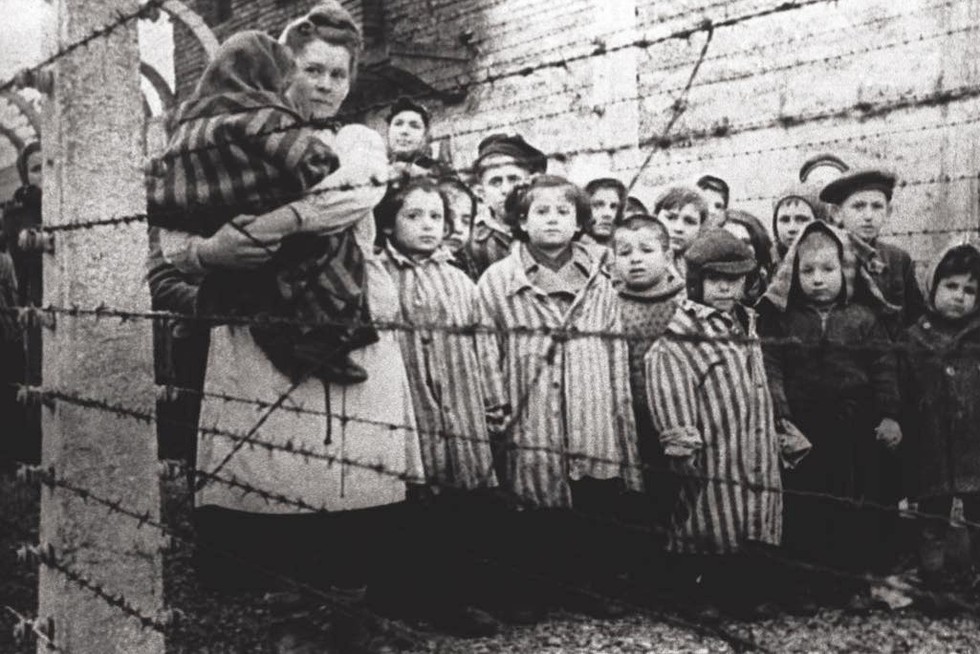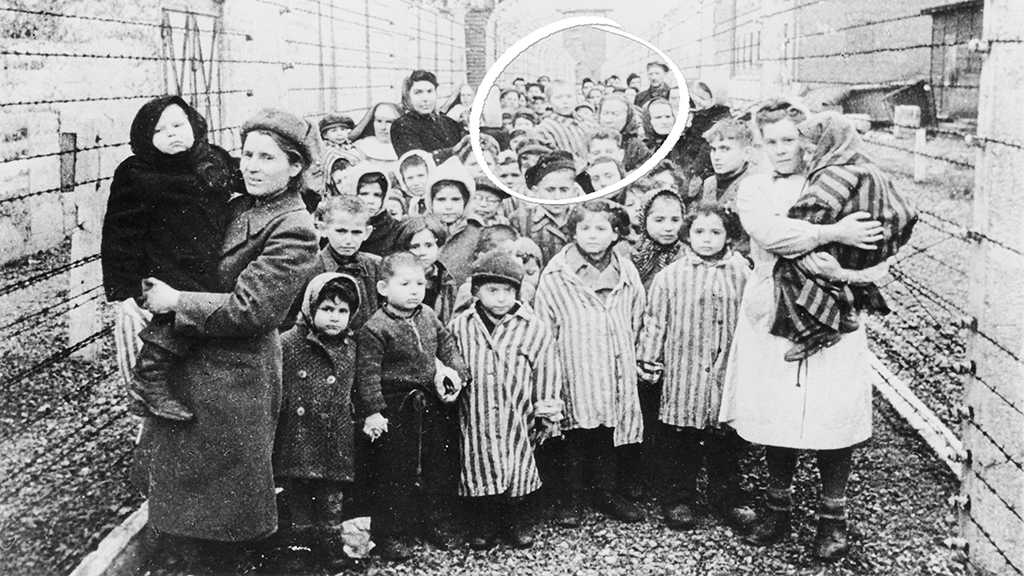The Hidden Pebbles — Camp, 1944
The camp was a place where silence was heavier than screams, where the very earth seemed to carry the weight of despair. Beyond the barbed wire, the world still turned — the sun rose, the seasons changed — but inside, time stood still. Hope was forbidden, and even the smallest gesture of humanity could become an act of defiance.
In that barren yard, where even the weeds refused to grow, a child found his rebellion in the simplest of things: pebbles.
Each morning, when the prisoners were marched through the yard, he bent down quickly, his small hands brushing against the frozen ground, searching. The guards barely noticed. To them, he was just another number, another fragile body in striped rags. But to him, every pebble he found was a treasure, a lifeline.
The pebbles were smooth, gray, and ordinary — meaningless to anyone else. Yet to the boy, they were names, memories, and voices. One pebble for his mother. One for his father. Another for his sister. Another for his brother. He lined them up carefully in the dust, whispering their names in a language the camp had not yet stolen from him.
At night, in the freezing barracks, when the stench of hunger and death filled the air, he placed the pebbles beside his straw bed. He lay beside them as though his family were there, breathing softly in the dark. He spoke to them in whispers, telling them what he had seen that day, promising that he would not forget.
The pebbles became his prayer.
They were his secret synagogue, his hidden church, his family table. When the world stripped everything else away — his toys, his home, his childhood — he rebuilt it from the ground, stone by stone.
One evening, as the barrack lights dimmed, a guard discovered the boy’s fragile collection. With a cruel laugh, he kicked them across the floor. The small stones scattered, clattering against wooden planks, rolling under bunks.
The barrack was silent. Grown men, who had seen every form of cruelty, lowered their eyes. They could not bear to watch.
But the boy did not cry. His small hands trembled as he crawled across the floor, gathering the stones one by one. His eyes glistened in the dim light, wet not with defeat, but with defiance. When he placed the last pebble back in line, he sat beside them with the solemnity of a rabbi before a prayer book.
The next day, he began collecting again.
No guard, no cruelty, no scattered stones could stop him. For every pebble lost, he found another. For every kick that broke his fragile world, he rebuilt it, stone by stone, night after night.
This child’s quiet ritual mirrors countless real acts of resistance that took place during the Holocaust. Survivors often spoke of the ways they clung to fragments of normalcy — a scrap of bread shared, a whispered song, a secret prayer. The Nazis tried to strip away identity, humanity, and faith. Yet, through such small acts, prisoners reclaimed their dignity.
Even today, pebbles carry sacred meaning in Jewish tradition. Visitors to cemeteries place small stones on gravestones as a sign of remembrance, permanence, and respect. Flowers may wither, but stones endure.
The boy’s pebbles were more than playthings; they were his memorial, his promise that the people he loved would not vanish into silence.
Holocaust history teaches us that survival was not always about food, strength, or luck. Sometimes, survival was a matter of memory. By remembering, even in the smallest gestures, prisoners defied their oppressors.
This child’s story — whether remembered in truth, testimony, or symbolic retelling — reminds us of the resilience of the human spirit. In a place built for death, he created life. In a camp designed for forgetting, he chose to remember.
When we search for Holocaust survivor stories, Auschwitz children testimonies, or Holocaust remembrance lessons, we are doing more than history. We are carrying forward whispers like this child’s. His pebbles are not buried in the dust of the camp — they reach us still, asking us to hold them, to carry them into the future.
The lesson of the hidden pebbles is simple yet profound:
-
Memory is resistance.
-
Love can survive even in silence.
-
Even a child, in the darkest of places, can teach the world about faith and dignity.

Years later, survivors would describe how children found ways to play in the camps, how they drew lines in the dust, whispered stories, or clutched pebbles and scraps of wood. These were not games. They were survival. They were defiance.
The boy’s pebbles may have been scattered again and again, but they could not be destroyed. Like the memory of the six million, they endure. They endure because we tell them. They endure because we remember.
And so, when we place a stone on a grave, or when we whisper a name into the wind, we are continuing his prayer. We are rebuilding his family beside him, stone by stone.
The Holocaust is not only history — it is memory, warning, and legacy. Through survivor testimonies, Auschwitz stories, and Holocaust memorials, we honor the resilience of those who lived and perished.
The boy with his hidden pebbles teaches us that even the smallest acts — a stone, a whisper, a prayer — can carry the weight of eternity.





